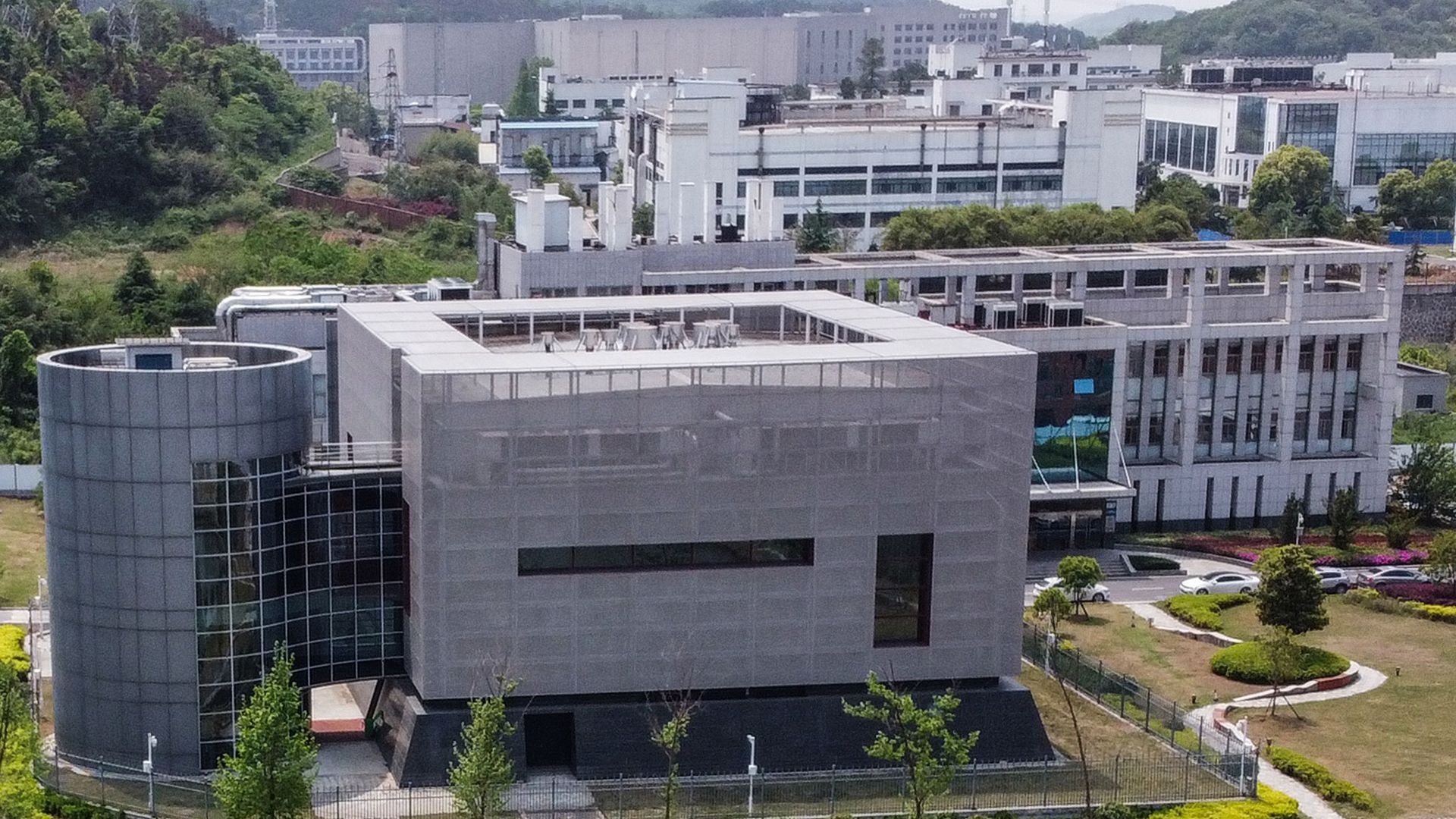 China's highest-security virology center is at the center of debate, speculation and misinformation about how, where and when the novel coronavirus emerged.
China's highest-security virology center is at the center of debate, speculation and misinformation about how, where and when the novel coronavirus emerged.
Why it matters: Knowing the origin of the novel coronavirus is key to efforts to prevent future possible pandemics and will shape China's role in the post-pandemic world.
In the U.S., two similar-sounding theories link the Wuhan Institute of Virology and the origin of the coronavirus. One is very unlikely; the other is plausible but unverified.
Theory 1: The coronavirus was created as part of a Chinese bioweapons research program allegedly linked to the WIV.
Virologists have determined this is highly unlikely. By looking at a virus' genetic material, it is possible to tell if it has been engineered in a lab. The coronavirus shows no such signs, as the World Health Organization also emphasized on April 21.
Some U.S. officials previously showed interest in this theory, but the scientific evidence debunking it has been persuasive.
There is also growing scientific evidence the virus originated in a bat and spread to humans via an intermediary animal, which would make it less likely it came from a lab.
Theory 2: The novel coronavirus was being studied at the WIV, and a lab accident resulted in the virus' accidental transmission to an employee who then unknowingly spread the virus in the city after leaving the institute premises.
This is plausible, but as yet there is no direct evidence to support it.
It isn't possible to tell from looking at the coronavirus' genetic sequence if it jumped from animal to human in a lab or in a wet market (or somewhere else). Confirmation would therefore have to come from contact tracing and related measures by Chinese authorities.
Context: There is precedent in China — and other countries, including Singapore — where breaches in lab safety procedures resulted in disease outbreaks.
In 2004, the coronavirus that causes SARS was accidentally leaked from a facility in Beijing, infecting nine people and killing one.
Yes, but: That was a known pathogen studied in numerous labs around the world. The novel coronavirus that causes COVID-19 was previously unknown to the scientific community.
What they're saying: Yuan Zhiming, the director of the Wuhan National Biosafety Laboratory and vice director of the WIV, denied the novel coronavirus had any connection to the lab in an April 18 interview with Chinese state broadcaster CGTN.
"There is no way this virus came from us," said Yuan. "People can't help but make associations, which I think is understandable. But it's bad when some are deliberately trying to mislead people."
Shi Zhengli, a highly respected scientist who also works at the institute and who has long studied coronaviruses that come from bats, said in February that she could “guarantee on my life” that the novel coronavirus did not come from the lab, according to the Wall Street Journal.
A version of the second theory, which claims that "patient zero" was an intern at the facility, has also made the rounds on the Chinese internet, prompting state news agency Xinhua to publish a Feb. 16 article stating that the person in question had never been infected.
Here are three key facts about the WIV:
1. It houses the Wuhan National Biosafety Laboratory, which is China's only Biosafety Level-4 (BSL-4) lab. That means it is the only facility in China permitted to handle the most dangerous known pathogens, including the Ebola and Lassa viruses.
It is the first of several BSL-4 labs that China is planning to build.
BSL-4 labs are rare and confer a degree of prestige on the countries that have them. Taiwan has two such labs; Japan's first BSL4 lab wasn't approved to handle top-tier pathogens until 2015.
By comparison, the U.S. has about a half-dozen BSL4 labs, with several more planned.
2. The lab is located just under 9 miles from the wet market where some scientists say the outbreak may have originated.
Its proximity to the first known cluster of cases at the Huanan market has fueled speculation the lab could somehow be involved.
3. The WIV is home to the Chinese scientists who sequenced the complete novel coronavirus genome in early January and who are now working on a vaccine.
Scientists affiliated with the institute have studied coronaviruses for years, but it's not the only lab in China where coronaviruses are studied.
The bottom line: As China seeks to demonstrate scientific heft, a spillover event at China's most prestigious virology lab — and subsequent cover-up — would be "another nail in the coffin of Xi's personal reputation and the CCP's reputation on the global stage," Elizabeth Economy, director for Asia studies at the Council on Foreign Relations, said on a media call last week.
"Globally, it would certainly be very harmful, Domestically, I think it would probably reinforce people's impressions who are already distrustful of the regime."
No comments:
Post a Comment